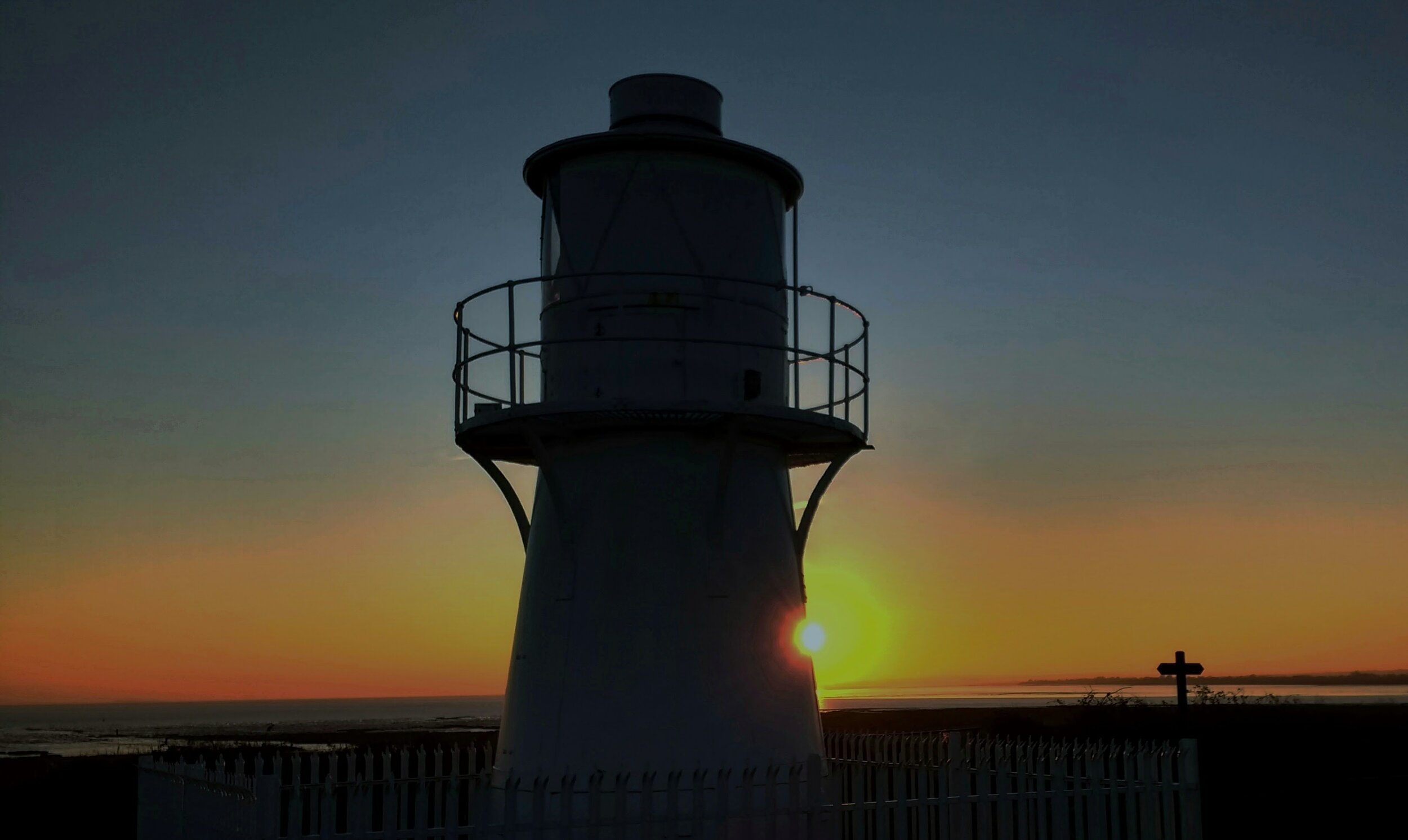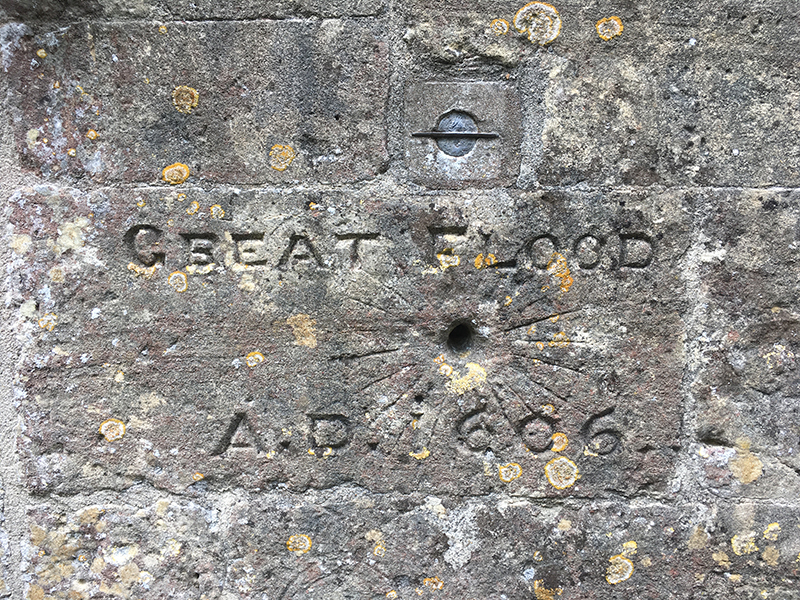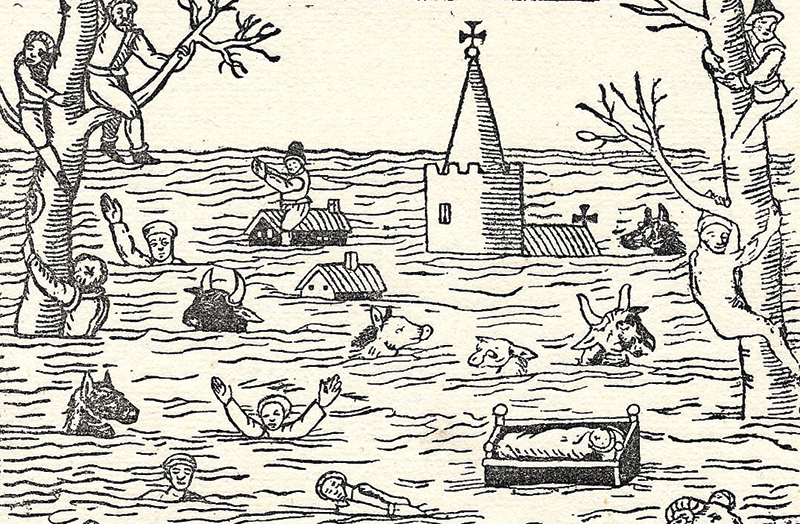On 30th January 1607, sea walls either side of the Severn Estuary were overwhelmed by flood waters.
Much of the Gwent, Somerset and Gloucestershire Levels were inundated, killing hundreds of people and many animals. The floodwaters reached depths of 10 feet in some areas, and several cities were affected, including Cardiff, Bristol and Gloucester.
The flood was caused by a combination of an unusually high spring tide, low atmospheric pressure, which caused sea levels to rise further, and a violent storm.
1884 reprint of ‘chapbook’ (Steve Rippon)
Details of the event are recorded in contemporary news pamphlets, called ‘chapbooks’, which were often illustrated with dramatic pictures of the devastation. The picture shown here was first published in a pamphlet about Somerset before being reused in another which told of the floods in Monmouthshire.
Some accounts mention stormy weather, whereas others fail to mention the weather, suggesting that the flood occurred without warning. This has lead some scientists to suggest that the flood may have been caused by a tsunami, but there is little evidence to back this theory.
Parishes wholly on the Gwent Levels fared the worst, and the 1607 flood is commemorated at several of their churches, although not all of the plaques are contemporary. Those at Redwick, Nash and St Brides can be seen from outside, and show the height of the floodwaters. At Goldcliff the plaque in the chancel reads: “... heare was lost 5000 and od pownds besides 22 people was in this parrish drownd ...”. £5000 is equivalent to around £650,000 today.
Some contemporary accounts and memorials of the flood record the date as 20th January 1606, because in the seventeenth century the New Year began on 25th March. Furthermore, in 1752 England and Wales formally changed from the old Julian to the more accurate Gregorian calendar, which added 10 days to the date. Thus, the modern reading of the date of the flood is 30th January 1607.
More information
For more information about the 1607 flood read the RMS Special Report: 1607 Bristol Channel Floods: 400-Year Retrospective.
Rose Hewlett, supervisor to the Living Levels history researchers, is studying the 1607 flood for her PhD at the University of Bristol. She is specialising in documents created in its aftermath at local level. These shed new light on the cause, effect and extent of the flood, and how people rebuilt their lives and livelihoods in its aftermath. Her new book, The day the sea came in: 1607 on the Gwent Levels, tells the story of the flood using those records. It has been published in conjunction with the Living Levels project. Rose will provide occasional updates on her work at Living Levels events.
…the sea being very tempestuously moved by the winds overflowed its ordinary banks and did drown 26 parishes adjoining the coast side in the aforesaid county of Monmouth.
- Lamentable newes out of Monmouthshire in Wales, 1607
Many who were rich in the morning
were beggars before noon…
- The Gentleman's Magazine, 1762










![Wesleyan Methodist chapel Castleton (Penny Gregson)[2].jpg](https://images.squarespace-cdn.com/content/v1/5a1d5fb38a02c70db7c34f81/fe4960cd-db68-469d-8411-f5e21327e383/Wesleyan+Methodist+chapel+Castleton+%28Penny+Gregson%29%5B2%5D.jpg)




